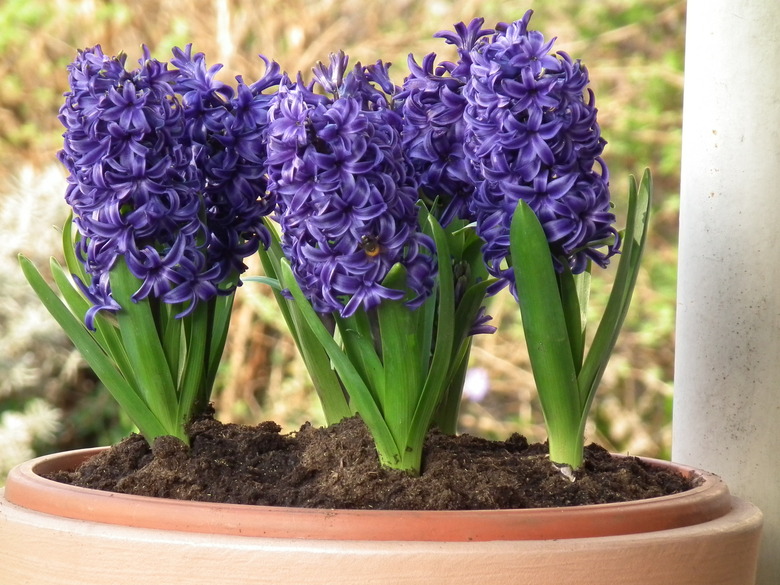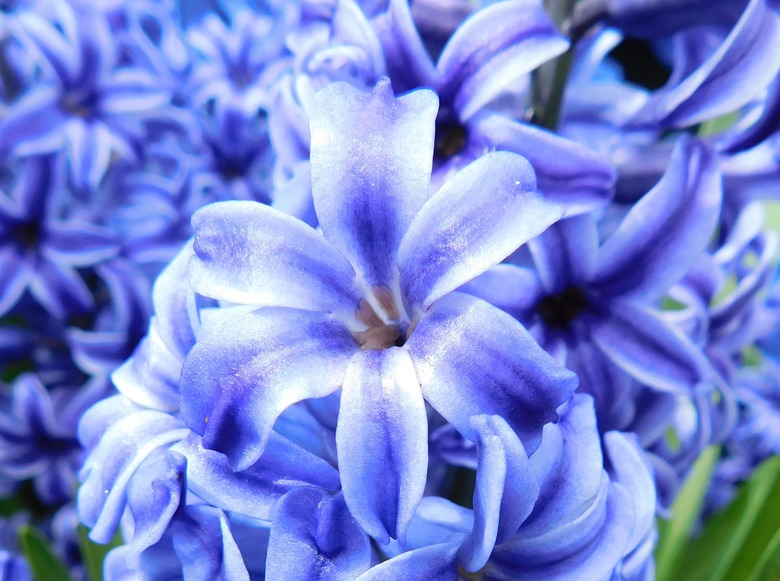How To Care For Hyacinth Plants Indoors
While hyacinths (Hyacinthus spp.) are spring-flowering bulbs, hyacinth flowers can be enjoyed indoors at any time of year.
The common hyacinth (Hyacinthus orientalis), which is winter hardy in USDA plant hardiness zones 4 to 8, is the variety of hyacinth most often grown as an indoor plant, in part because this flowering bulb is easy to force to bloom in the winter in containers.
Tip
Hyacinth bulbs can cause skin irritation, so it's a good idea to wear gloves when handling them and wash your hands afterward.
Common Hyacinth Characteristics
The common hyacinth, also known as the garden hyacinth, is native to Turkey, Syria and Lebanon. This species of bulb is grown for its beautiful flowers, which grow on spikes and are extremely fragrant. They are covered in six-petaled florets, each with a length of about an inch.
Each hyacinth bulb produces a single flower stalk. Hyacinth blooms are often blue, pink, purple, red or white depending on the cultivar. City of Haarlem (Hyacinthus orientalis 'City of Haarlem,' zones 4 to 8) is a yellow cultivar. Blue Jacket (Hyacinthus orientalis 'Blue Jacket,' zones 4 to 8) is a popular navy blue cultivar.
It's a good idea to wear gloves while handling hyacinth bulbs, as these bulbs contain toxins that can cause skin irritation.
How to Force Hyacinth Indoors
Hyacinth bulbs indoors can be forced to bloom out of season by potting the bulbs in well-draining soil and then storing them at temperatures between 40 and 45°F in a dark place for a period of 12 to 16 weeks. Make sure the tops of the bulbs peek out through the soil. The potting mix should be watered whenever it dries out. It is also imperative that the pot have drainage holes.
Tip
Hyacinth bulbs can be forced to bloom indoors by exposing them to temperatures between 40 and 45°F for three or four months.
The refrigerator is one option for storing hyacinth bulbs for forced bloom. However, if you are storing fruit that ripens off the plant, like apples, in the refrigerator at the same time, you should cover the bulbs with a plastic bag. This is because apples and other fruit emit ethylene gas as they ripen. This can interfere with the flowering and growth of bulbs.
Once yellow shoots begin to emerge from the bulbs, transfer them to a cool location with temperatures between 50 and 60°F and low light. Once those shoots turn green, which usually takes less than a week, you can move the plants into brighter light, like on a windowsill, and keep them at temperatures between 60 and 70°F.
Hyacinth Care Indoors
Potted hyacinth plants that have been forced to bloom should be watered regularly. It takes about four weeks for bulbs removed from storage to begin flowering.
Caring for hyacinths indoors also entails rotating these houseplants frequently so that all parts of it receive the same amount of light and grow upright and even.
Deadheading spent hyacinth flowers keeps them from producing seeds, which allows bulbs to save energy for flowering the next year. Flowering usually declines after several growing seasons, however.
References
- North Carolina State Extension: Hyacinthus orientalis
- Iowa State University Extension and Outreach: Forcing Hyacinth Bulbs Indoors During Winter
- Missouri Botanical Garden: Hyacinthus orientalis
- Missouri Botanical Garden: Hyacinthus orientalis 'Blue Jacket'
- University of Arkansas Division of Agriculture Research & Extension: Plant of the Week: Hyacinth orientalis; Garden Hyacinth

